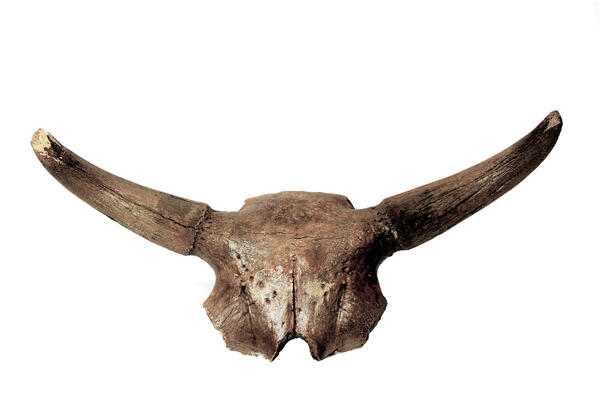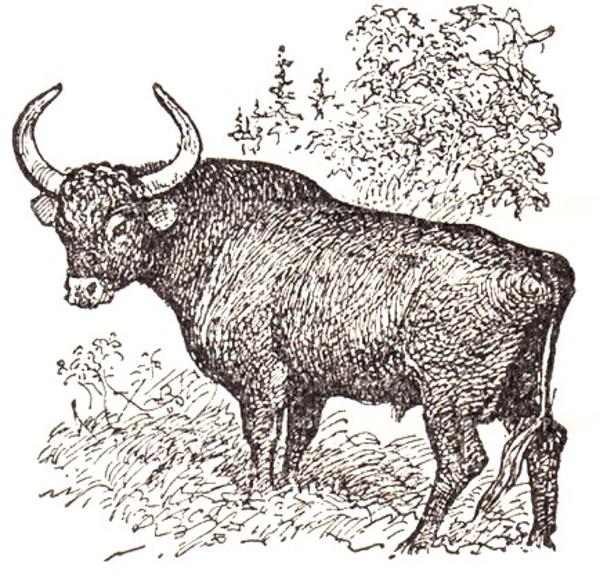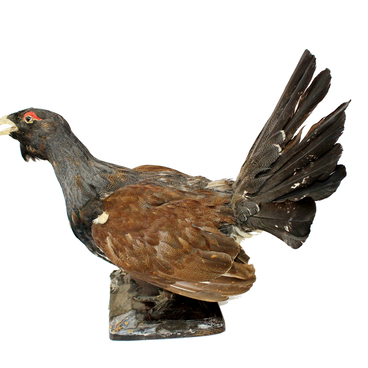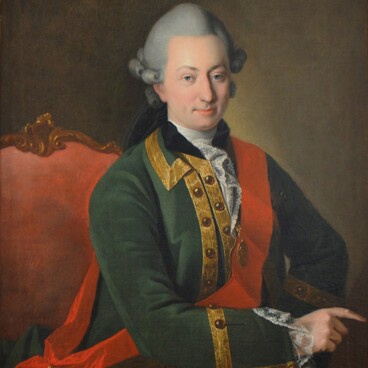The museum exhibits the forehead part of a wild ox skull with horns, which was acquired in 1958. The skill was found by excavator operator B. Grishin in the Zausinsky ravine in Syzran. The horns have a span of 88 centimeters.
The wild ox is one of the forebears of modern cattle. These animals lived from the second half of the anthropogenic era in the forest-steppe and steppes of the eastern hemisphere. Wild oxen began to be domesticated sometime BC. Back then there were entire herds of these wild animals that people would hunt for their meat.
After the end of the Ice Age, these oxen were some of the largest hoofed animals. They were very strong animals with a lean body weighing up to 800 kilos that could often be as tall as two meters from the hooves to the top of the back: today the only animal that has a body as massive is perhaps the European bison.
The shoulder section of a wild ox’s body usually had a large hunch. The head sat high in the body and on top of it there were sharp horns. The horns could have a span of up to two meters. Adult males were black with a narrow white “belt” along the back while females and young animals were red-brown.
Wild oxen fed on grass, sprouts as well as tree and shrub leaves. They mostly lived in the forest-steppe and sometimes would wander into the steppes. They would probably only go into the wooded areas in the winter. They lived in small groups or on their own, while in the winter, they would get together in large herds. Wild oxen had few natural enemies: they were strong and aggressive and could easily handle any predator.
The wild ox is one of the forebears of modern cattle. These animals lived from the second half of the anthropogenic era in the forest-steppe and steppes of the eastern hemisphere. Wild oxen began to be domesticated sometime BC. Back then there were entire herds of these wild animals that people would hunt for their meat.
After the end of the Ice Age, these oxen were some of the largest hoofed animals. They were very strong animals with a lean body weighing up to 800 kilos that could often be as tall as two meters from the hooves to the top of the back: today the only animal that has a body as massive is perhaps the European bison.
The shoulder section of a wild ox’s body usually had a large hunch. The head sat high in the body and on top of it there were sharp horns. The horns could have a span of up to two meters. Adult males were black with a narrow white “belt” along the back while females and young animals were red-brown.
Wild oxen fed on grass, sprouts as well as tree and shrub leaves. They mostly lived in the forest-steppe and sometimes would wander into the steppes. They would probably only go into the wooded areas in the winter. They lived in small groups or on their own, while in the winter, they would get together in large herds. Wild oxen had few natural enemies: they were strong and aggressive and could easily handle any predator.





